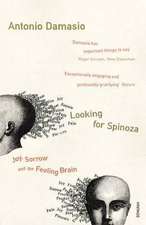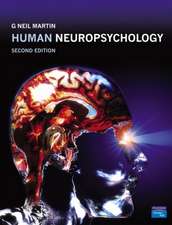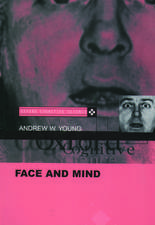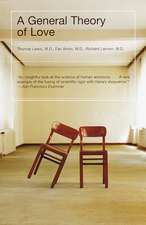Brain and Space
Editat de Jacques Paillarden Limba Engleză Hardback – 6 iun 1991
Preț: 539.58 lei
Preț vechi: 815.98 lei
-34% Nou
Puncte Express: 809
Preț estimativ în valută:
103.25€ • 110.41$ • 86.09£
103.25€ • 110.41$ • 86.09£
Carte tipărită la comandă
Livrare economică 07-14 aprilie
Preluare comenzi: 021 569.72.76
Specificații
ISBN-13: 9780198542841
ISBN-10: 0198542844
Pagini: 512
Ilustrații: 8 pp colour plates, halftones, line drawings
Dimensiuni: 11 x 11 x 11 mm
Greutate: 0 kg
Editura: OUP OXFORD
Colecția OUP Oxford
Locul publicării:Oxford, United Kingdom
ISBN-10: 0198542844
Pagini: 512
Ilustrații: 8 pp colour plates, halftones, line drawings
Dimensiuni: 11 x 11 x 11 mm
Greutate: 0 kg
Editura: OUP OXFORD
Colecția OUP Oxford
Locul publicării:Oxford, United Kingdom
Cuprins
PART 1: David L. Sparks: The neural encoding of the location of targets for saccadic eye movements; D. Guitton, D. P. Munoz, & D. Pélisson : Spatio-temporal patterns of activity on the motor map of cat superior colliculus; Vincent Delreux, Sylvie Vanden Abeele, Philippe Lefèvre, & André Roucoux: Eye-head co-ordination: influence of eye position on the control of head movement amplitude; M. Jeannerod: A neurophysiological model for the directional coding of reaching movements; John Schlag, Madeleine Schlag-Rey, & Paul Dassonville: Spatial programming of eye movements; PART 2: A. Berthoz: Reference frames for the perception and control of movement; Jean Pierre Roll, Régine Roll, & Jean-Luc Velay: Proprioception as a link between body space and extra-personal space; John F. Kalaska: Parietal cortex area 5: a neuronal representation of movement kinematics for kinaesthetic perception and movement control?; V.S. Gurfinkel & Yu S. Levick: Perceptual and automatic aspects of the postural body scheme; Jacques Paillard: Motor and representational framing of space; PART 3: J.F. Stein: Space and the parietal association areas; Jean-René Duhamel, Carol L. Colby, & Michael E. Goldberg: Congruent representations of visual and somatosensory space in single neurons of monkey ventral intra-parietal cortex (Area VIP); Graham Ratcliffe: Brain and space: some deductions from the clinical evidence; Edoardo Bisiach: Extinction and neglect: same or different?; T. Brandt, M. Dieterich, & T. Probst: Self-motion and ocular motor disorders affect motion perception; PART 4: John O'Keefe: The hippocampal cognitive map and navigational strategies; R.U. Muller, J.L. Kubie, E.M. Bostock, J.S. Taube, & G.J. Quirk: Spatial-firing correlates of neurons in the hippocampal formation of freely moving rats; C. Thinus-Blanc, E. Save, M-C. Buhot, & B. Poucet: The hippocampus, exploratory activity, and spatial memory; Edmund T. Rolls: Functions of the primate hippocampus in spatial processing and memory; PART 5: Michael A. Arbib: Interaction of multiple representations of space in the brain; Pietro Morasso, & Vittorio Sanguineti: Neurocomputing concepts in motor control; Jean-Claude Gilhodes, Yves Coiton, & Jean-Luc Velay: Sensorimotor space representation: a neuromimetic model; Y. Burnod & M. Dufosse: A model for the co-operation between cerebral cortex and cerebellar cortex in movement learning; Epilogue; J. Paillard: Knowing where and knowing how to get there; Index.

















